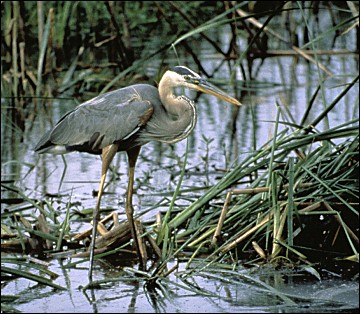
We humans tend to be proud of our inventions, and indeed we should be. But lest we get too swelled-headed about all this, we should keep in mind that nature often has anticipated us, sometimes by millions of years. One invention perfected first by nature is the heat exchanger.
If you go out into the desert and look around, you may notice that
birds are not only barefoot, but most of them are bare-legged, too. Doesn't appear
to be a good strategy on a cold day. Nevertheless, it's not anywhere as bad as it
seems. True, the unprotected legs and the blood inside does get cold. So cold, that
venous blood returning from the legs to the body could easily result in hypothermia for
the bird, if not for the handy dandy heat exchanger. The rete mirabile, or the
wonderful network, is a maze of blood vessels bringing hot arterial blood from the body
up close and personal to the veins carrying blood coming up from the feet, warming that
blood to tolerable temperature.

Contributor: Arthur H. Harris, Laboratory for Environmental Biology, Centennial Museum, University of Texas at El Paso.
Desert Diary is a joint production of the Centennial Museum and KTEP National Public Radio at the University of Texas at El Paso.

Great Blue Heron with lots and lots of leg to get cold. Photograph by Jerry Tollison, courtesy of the U.S. Fish ∓ Wildlife Service.
Welty, J. C. 1982. The life of birds. 3rd ed., Saunders College Publishing, Philadelphia. 754 pp.